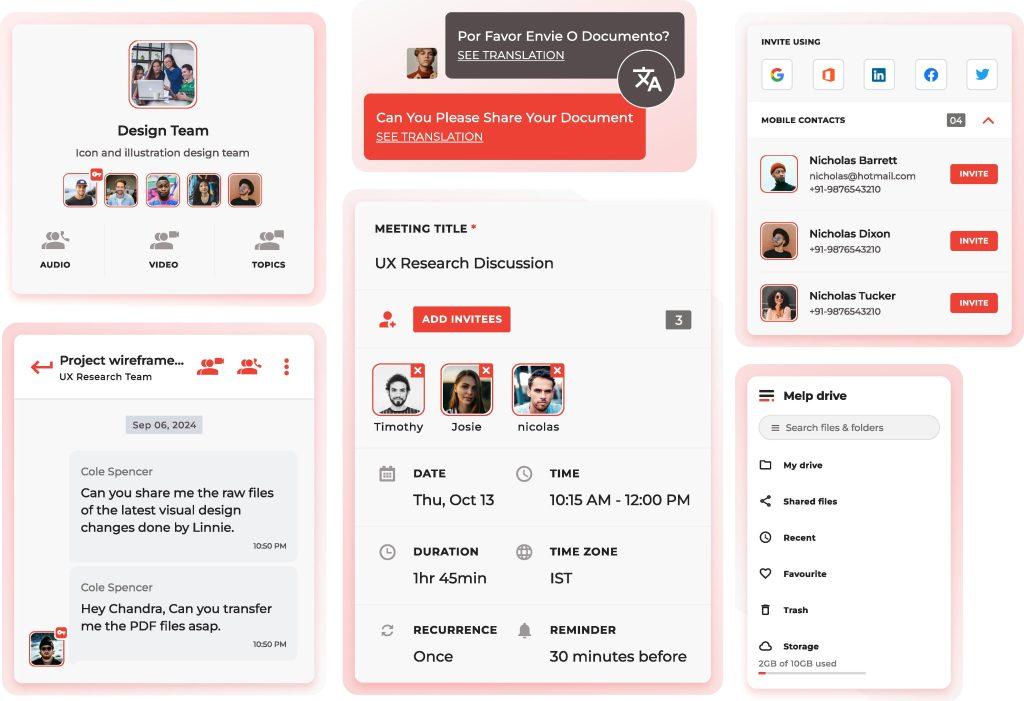MelpApp: A Game-Changer for Team Communication and Collaboration
In today’s fast-paced business world, effective communication and collaboration are essential for success

In today’s fast-paced business world, effective communication and collaboration are essential for success

Let me ask you something. Are you a business owner? Are you a team lead? Are you a member of a team? If you are any of these, let me directly put it

To add featured content go to Theme Options -> Homepage (Featured) and turn the switch on then add the content you want for each section.
In the age of hybrid work, one thing has become painfully clear — collaboration has become both easier and harder at the same time. We have more tools than ever to connect, but somehow, teams still feel disconnected. Messages scatter across apps, meetings multiply, and important updates disappear into digital noise. That’s where team collaboration
Not long ago, digital transformation meant simply moving files to the cloud and chatting on a few apps. But the modern workplace has changed drastically. Today’s enterprises are not just looking for tools—they’re looking for connection, clarity, and collaboration that feels effortless. And that’s where Melp AI Digital Workplace is quietly transforming how teams work
When teams are spread across cities, time zones, and devices, the tools you pick shape how work actually happens. A strong collaboration setup keeps conversations clear, makes documents simple to find, and turns meetings into decisions instead of noise. This guide looks at ten practical platforms—Melp AI Digital Workplace, Slack, Microsoft Teams, Google Workspace, Zoom,
There’s a moment most managers dread but rarely admit: watching a top performer walk out the door and realizing the problem wasn’t pay, benefits, or the job description — it was the chaos that made coming to work unbearable. Chaotic work environments quietly erode motivation, slow workplace productivity, and push your best people into safer,
Working with colleagues in different countries is powerful—and complicated. Deadlines arrive while some teammates sleep, messages pile up in scattered channels, and decisions that should take a day turn into a week because people are trying to align calendars and clarify what was said. The truth is simple: global teams need tools that make collaboration
You’ll hear a lot about smart machines and automation when you walk onto a factory floor. But here’s the odd thing: sometimes the loudest problem is quiet. It’s not a snapped belt or a bad weld — it’s a missed message, a confused handoff, or a schedule nobody bothered to share. In that gap between
You know that feeling: you open your laptop, your inbox is a small apocalypse, Slack has 47 unread pings, you can’t find the document with the final numbers, and a meeting invite pops up about a project you thought was done. That’s not just a bad morning — it’s workflow chaos, and it’s quietly eating
If payroll feels like a monthly ritual of crossing fingers and hoping everything adds up, you’re not alone. Today’s workplaces juggle people across locations, changing labor rules, and different pay schedules. That complexity turns payroll into much more than a check-writing chore — it becomes a measure of whether an organization runs like a calm
Have you ever reached the end of the workday and wondered: “What did I even accomplish today?” You’ve been online for eight hours, your calendar looks like a puzzle of back-to-back meetings, and yet your real to-do list barely moved. The truth is, most professionals don’t lose time because their jobs are too hard —
In today’s fast-moving business world, the best digital workplace tools aren’t a nice-to-have — they’re how teams get real work done without getting bogged down. A thoughtful digital workplace reduces the hours people waste hunting for information, keeps conversations tied to the right projects, and makes meetings and handoffs actually useful. Research shows knowledge workers